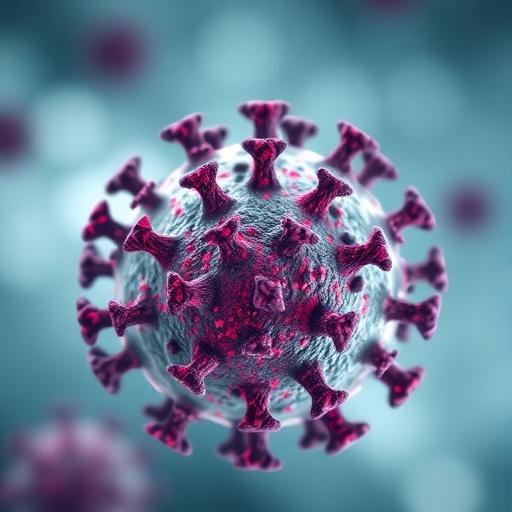Recent advancements in the field of gene therapy have spotlighted the potential of AAV (adeno-associated virus) vectors in delivering targeted treatments for various diseases. A new study led by Kumar, Corkran, and Cheema has taken these advancements to heart, focusing on alleviating mucociliary dysfunction specifically in asthma patients. This research, published in Gene Therapy, highlights how AAV-mediated siRNA (small interfering RNA) delivery can be effectively utilized to tackle the harmful effects of MUC5AC, a protein that contributes to mucus overproduction in asthmatic conditions. By significantly downregulating MUC5AC expression, the researchers aim to restore proper mucociliary function and improve respiratory health.
Asthma is a respiratory condition that is characterized by chronic inflammation and hyperactivity of the airways, leading to difficulty breathing, wheezing, and coughing. One of the pivotal issues in asthma is the excessive production of mucus, primarily driven by the overexpression of MUC5AC. This overproduction can lead to airway blockage, impede mucociliary clearance, and exacerbate the symptoms of asthma. Current treatments primarily focus on bronchodilation and anti-inflammatory agents, but they do not specifically target the underlying mucus hypersecretion. The study conducted by Kumar and colleagues addresses this gap by exploring a gene therapy approach that specifically hones in on MUC5AC.
Using AAV vectors for siRNA delivery represents a significant breakthrough in treatment methodology. These vectors are non-pathogenic and have been shown to efficiently deliver genetic material into target cells with minimal immune response. The researchers designed a siRNA targeting the MUC5AC gene to knock down its expression and suppress the pathological mucus hypersecretion observed in asthma. This method leverages the natural ability of AAV to transduce respiratory epithelial cells, providing a more localized and potent therapeutic effect compared to systemic treatments.
In their study, Kumar and his team performed a series of experiments to evaluate the efficacy and safety of AAV-mediated siRNA delivery. Using in vitro models, they demonstrated that targeted delivery resulted in a significant reduction in MUC5AC expression levels. These promising laboratory findings set the stage for further in vivo studies, which the researchers subsequently conducted using relevant asthma models. The compelling results showcased a marked improvement in airway function and mucociliary clearance in treated animals, reflecting the potential of this novel therapeutic approach.
An essential aspect of the research was ensuring that the AAV vectors employed were devoid of any pathogenic characteristics, making them suitable for therapeutic applications. By utilizing serotypes that demonstrate tissue tropism for the lung epithelium, the researchers were able to maximize the specificity and efficiency of the treatment, minimizing off-target effects that could lead to unwanted complications. This careful selection process for AAV vectors underscores the meticulous nature of gene therapy development and the commitment to patient safety.
The outcomes of this innovative study have broader implications beyond just asthma management. By successfully targeting MUC5AC, the research paves the way for similar therapeutic strategies that could address other respiratory disorders characterized by mucus overproduction. Conditions such as chronic obstructive pulmonary disease (COPD) and cystic fibrosis bear similarities to asthma when it comes to excessive mucus production and could potentially benefit from similar gene therapy approaches aimed at downregulating MUC5AC or other related targets.
Another noteworthy aspect of this research is the scalability of the proposed treatment model. The use of AAV vectors and siRNA could be adapted to develop personalized medicine strategies in the future, allowing treatments to be tailored based on individual patient profiles, particularly with respect to the severity and specificity of their condition. The impressive specificity of the AAV delivery system may facilitate large-scale clinical trials in the future, especially for patients who do not respond adequately to conventional therapies.
Furthermore, the study highlights the importance of multidisciplinary collaboration between molecular biologists, respiratory specialists, and bioengineers in the development of gene therapies. The research not only sheds light on the individual contributions of its authors but also serves as a testament to the power of teamwork in overcoming complex medical challenges. This collaborative spirit is essential for translating scientific advancements into clinical solutions with the potential for real-world impact on patient health.
As gene therapy approaches undergo rigorous testing and development, regulatory considerations will play a significant role in how these treatments are introduced into clinical practice. Ensuring compliance with safety standards and obtaining necessary approvals from governing bodies will be crucial steps in moving from successful preclinical studies to human applications. The research team is already discussing strategies for navigating regulatory pathways, which will be pivotal in realizing the therapeutic cloning of AAV-mediated siRNA for MUC5AC.
In conclusion, the study conducted by Kumar, Corkran, and Cheema opens a promising chapter in asthma treatment through the innovative use of AAV-mediated siRNA delivery to combat mucociliary dysfunction. This approach not only showcases the potential of targeted therapies but also underscores a growing field that seeks to harness the power of genetic interventions to provide much-needed relief for patients suffering from chronic respiratory conditions. As this research continues to evolve, it marks a significant step forward, heralding a future where gene therapies might become a mainstay treatment for debilitating diseases like asthma.
This groundbreaking work exemplifies how science is poised at the frontier of medical innovation, leveraging deep biological insights and cutting-edge technology to bring forth therapies that could one day transform lives. As researchers continue to explore the boundaries of what is possible, the promise of genetic solutions to longstanding medical problems seems more tangible than ever.
Subject of Research: Gene Therapy for Asthma
Article Title: AAV-mediated MUC5AC siRNA delivery to prevent mucociliary dysfunction in asthma
Article References:
Kumar, S., Corkran, M., Cheema, Y. et al. AAV-mediated MUC5AC siRNA delivery to prevent mucociliary dysfunction in asthma.
Gene Ther 32, 508–516 (2025). https://doi.org/10.1038/s41434-025-00564-3
Image Credits: AI Generated
DOI: 23 August 2025
Keywords: Gene Therapy, Asthma, AAV, siRNA, MUC5AC, Mucociliary Dysfunction




